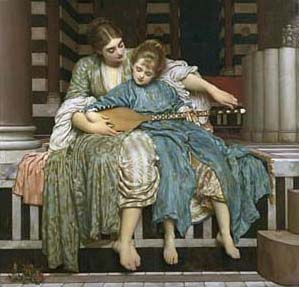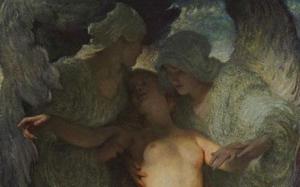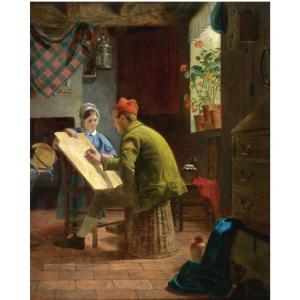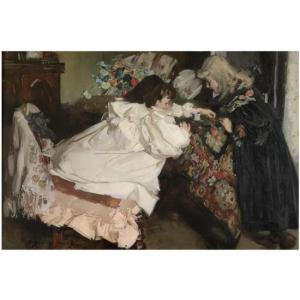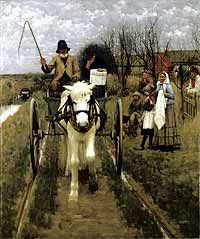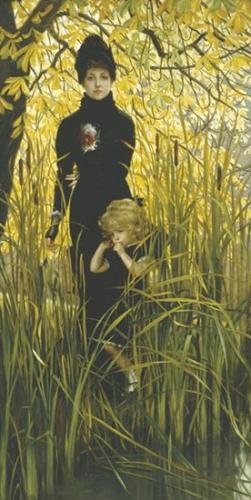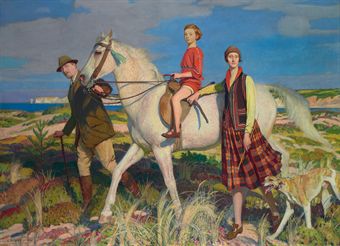The Rise of Victorian Art Pt. 7 – artmarketblog.com
This will be my last post on the rise of Victorian paintings as I believe that I have covered the period in more than enough detail. To finish off I would like to list the major problems with the market for Victorian paintings that has meant that progress has been slower than many people would like.
The major problems with the market for Victorian paintings are:
1. There are only a few active major collectors of Victorian paintings whose actions can have a major effect on market sentiment as well as people’s perception of the market for Victorian paintings.
2. A large number of second and third rate Victorian paintings exist on the market which has given the whole genre a bad name, and created a situation where people define the period by what are essentially paintings that do not reflect the true talent and creativity that the top artists of the period were capable of.
3. The subject matter and Britishness of the work of the Victorian painters has limited appeal, particularly for non-British collectors, which makes finding buyers all the more difficult.
4. Many top Victorian painters have yet to be recognised and linger in relative obscurity.
5. A large number of the top paintings from the period have remained behind closed doors in private collections for long periods of time, sometimes for many decades. Many top paintings from the period are also owned by museums, which means that what are currently considered to be the most desirable works rarely appear on the market.
Thankfully the market for Victorian paintings is progressing and expanding thanks to greater attention being given to the period by academics and curators. This has led to the work of the British Victorian painters being displayed more frequently in America and Europe where more and more collectors are warming to the work of the period. What is also encouraging is the fact that the work of many virtually unknown Victorian painters is being given the recognition that it deserves which has given much greater depth and character to the market. As more and more artists are discovered, the number of works that are considered to be desirable will begin to rise, and will lead to a greater number of collectors entering the market and higher prices being paid.
My advice would be to research the work of the lesser known British Victorian artists who have at least received some recognition and attention from critics and scholars, and invest in their work right now while there are still bargains to be found !!!!!.
Part 1:
http://artmarketblog.com/2010/02/25/the-rise-of-victorian-paintings-part-1-artmarketblog-com/
Part 2:
http://artmarketblog.com/2010/03/04/the-rise-of-victorian-paintings-pt-2-artmarketblog-com/
Part 3:
http://artmarketblog.com/2010/03/11/the-rise-of-victorian-paintings-pt-3-artmarketblog-com/
Part 4:
http://artmarketblog.com/2010/03/18/the-rise-of-victorian-paintings-pt-4-artmarketblog-com/
Part 5:
Part 6:
 **Nicholas Forrest is an art market analyst, art critic and journalist based in Sydney, Australia. He is the founder of http://www.artmarketblog.com, writes the art column for the magazine Antiques and Collectibles for Pleasure and Profit and contributes to many other publications
**Nicholas Forrest is an art market analyst, art critic and journalist based in Sydney, Australia. He is the founder of http://www.artmarketblog.com, writes the art column for the magazine Antiques and Collectibles for Pleasure and Profit and contributes to many other publications
Filed under: art, art auction, art collectors, art market, victorian art, victorian paintings | Tagged: art, art investment, art market, victorian art, victorian paintings | 4 Comments »













